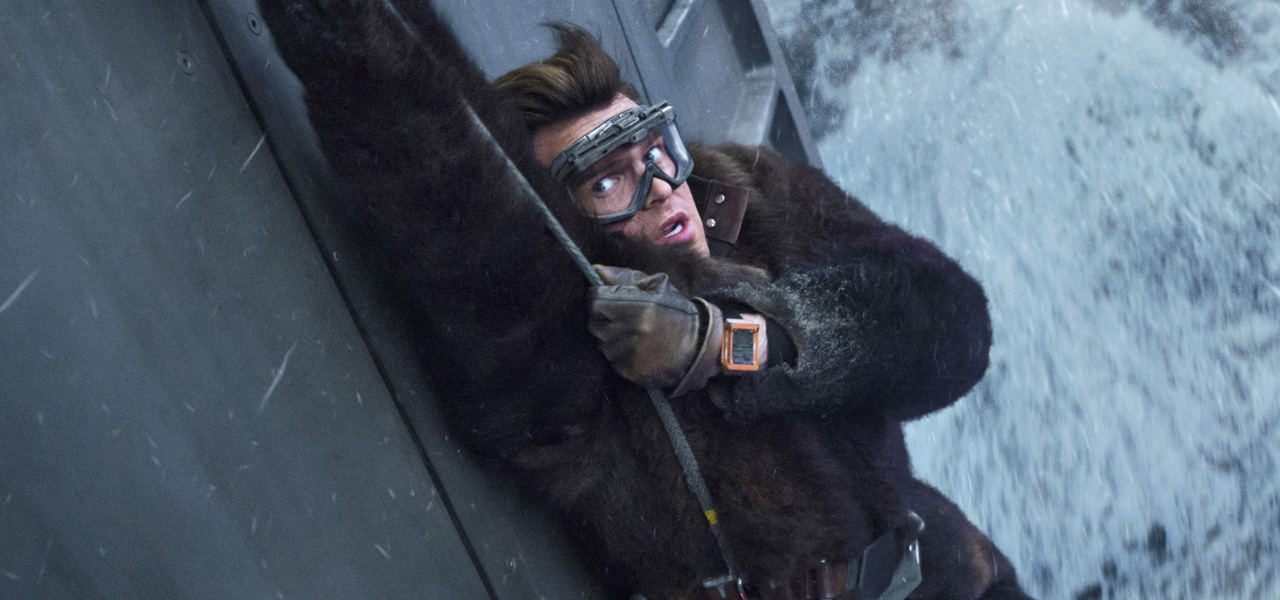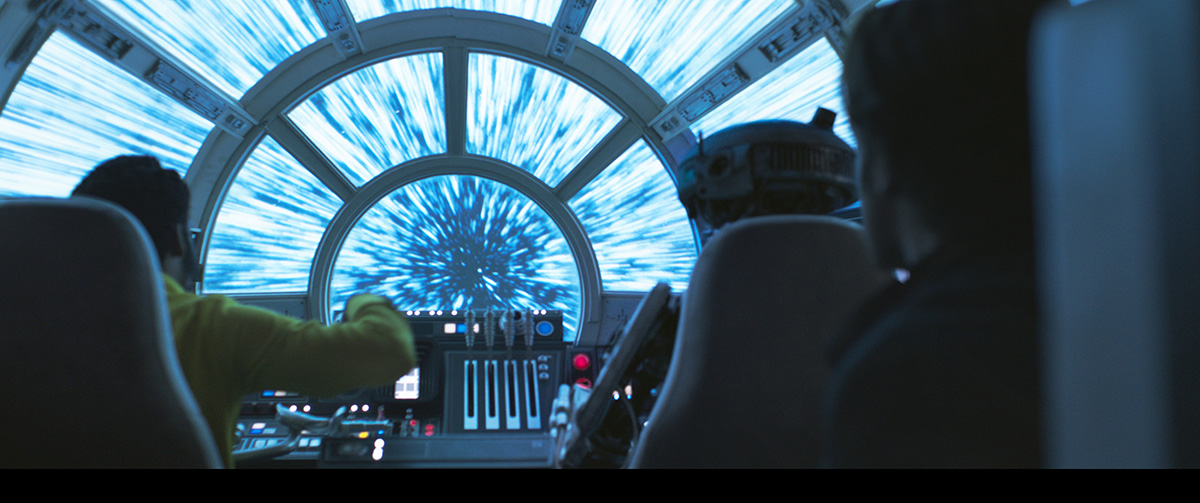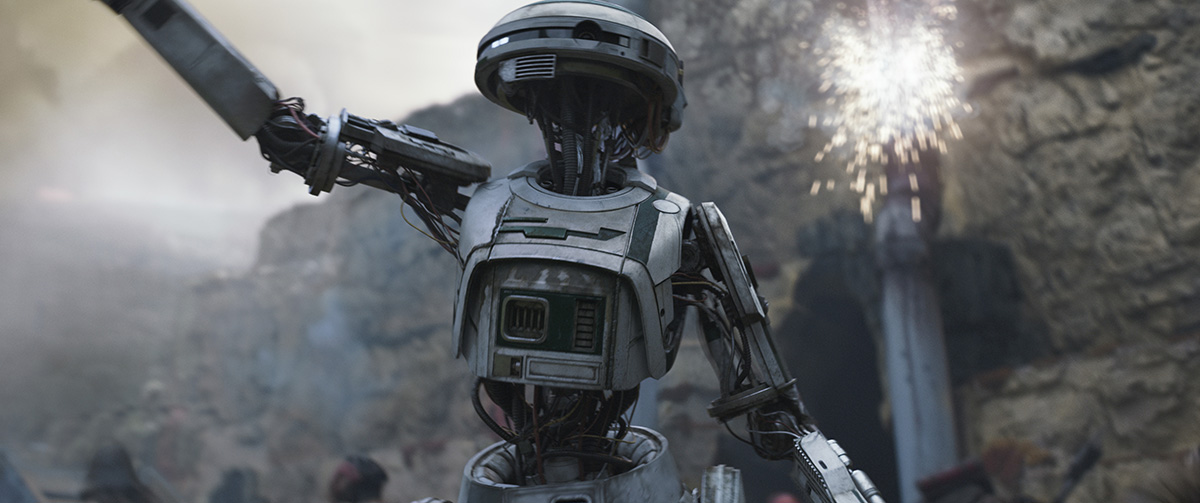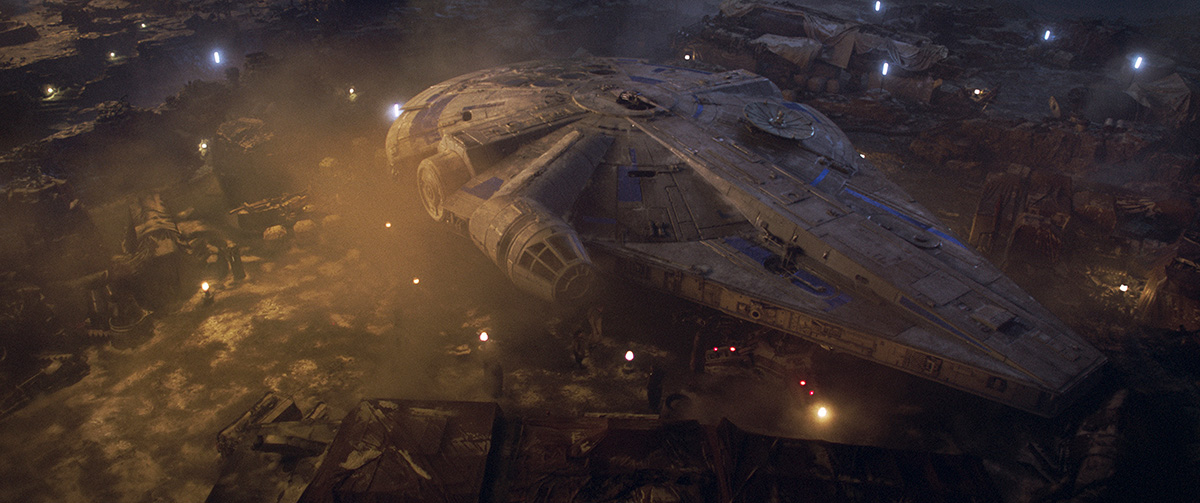

‘Solo: A Star Wars Story’: What You Need To Know About It
Solo: A Star Wars Story is the fourth Star Wars film made since Disney purchased Lucasfilm in 2012. It depicts a young Han Solo who is just making his way as pilot – and a smuggler – in the galaxy.
What is Solo?
Solo is known as one of the ‘anthology’ films, in that it is a standalone movie set prior to the events of Star Wars: Episode IV: A New Hope, but not part of the run of sequels also being made. In the film, we meet a younger Han Solo (Alden Ehrenreich), who dreams of becoming a pilot. Along his journey he befriends a few familiar faces, including the Wookie Chewbacca (Joonas Suotamo) and Lando Calrissian (Donald Glover), who also feature in the original Star Wars trilogy (in that trilogy, Han Solo was played by Harrison Ford).
The story follows Han Solo and a group of smugglers on a mission to steal a precious power source for the crime lord Dryden Vos (Paul Bettany), himself at the whim of the mysterious Crimson Dawn syndicate. Along the way, Solo is separated from and then reunited with his lover Qi’ra (Emilia Clarke). Several worlds mentioned in previous Star Wars films and the ubiquitous Millennium Falcon spacecraft make an appearance.
Behind the Scenes
Perhaps the most talked about aspect of Solo so far has been the fact that the original directors, Phil Lord and Christopher Miller (Cloudy with a Chance of Meatballs, The Lego Movie, 21 Jump Street) were replaced mid-way through shooting of the film in London by director Ron Howard.
A statement from the directors at the time put the split down to “creative differences,” but in the weeks and months that followed, several inside takes suggested Lord and Miller had been experimenting with an improvised approach to filming that was not what Lucasfilm or the script writers, Jonathan Kasdan and Lawrence Kasdan, were after.
Howard came in and reportedly re-filmed 70% of what had already been shot, with no major script alterations and with no changes made to the original release date. Lord and Miller retained executive producer credits.
In terms of its place in the current slew of Star Wars films, one unique side of Solo is that it feels much more gritty and real than other recent outings. Cinematographer Bradford Young (Selma, A Most Violent Year, Arrival) remained on the show after the original directors left, and has said in interviews that he was going for a more ‘naturalistic’ feel to the production.

Visual Effects
Unsurprisingly, Solo features a substantial amount of effects work, although there is certainly less of a heavy cg feel. Neal Scanlan led the practical creature effects, which include various alien characters and robots. Industrial Light & Magic (ILM), overseen by visual effects supervisor Rob Bredow, and a host of out-sourced vfx studios, delivered digital effects for the film.
Several characters were produced via on-set performances then enhanced or completely replaced with cg. The six-limbed pilot Rio Durrant (voiced by Jon Favreau) was performed by acrobat Katy Kartwheel on set, with ILM then taking over. The droid L3-37 (voiced by Phoebe Waller-Bridge) was a completely cg-animated creation, but performed on set in a partial greenscreen/robot costume.
The famous Millennium Falcon was built as a partial full-sized set for exteriors and interiors, and in many shots was of course fully computer-generated. However, to help the actors and filmmakers during filming of the cockpit scenes, rear-projection screens were placed around the cockpit soundstage. Pre-made exterior renderings – showing, for example, starfields or hyperspace imagery – were projected on those screens during filming, aiding in light interaction and helping to immerse the actors in the scene.

Release dates
Solo premiered in Los Angeles on May 10, 2018, and also screened at the Cannes Film Festival on May 15. It has a release date in the U.S. this Friday, May 25, with many worldwide dates being on or around the same time. It opens today in France, Sweden, Denmark, Indonesia, and another half-dozen countries or so, and it opens tomorrow in countries that include Argentina, Australia, Brazil, Germany, U.K., Russia, and Saudi Arabia. Besides the U.S., the Friday launches include China, Spain, Pakistan, Turkey, Vietnam, and South Africa. The only country that has to wait for an extended period of time is Japan, where the film doesn’t open until June 29.
Box office preview
Industry projections have the film tracking for a $130-150 million opening at the U.S. box office, covering the four-day Memorial Day weekend, which would be the lowest of the recent Star Wars releases. Lucasfilm’s previous Star Wars release, The Last Jedi, ended up with $620M domestic and $1.3 billion worldwide, but only came out in December 2017. There’s a chance some viewers may suffer from ‘franchise fatigue.’
Critics’ response
Solo currently has a 71% rating on Rotten Tomatoes.
Michael Rechtshaffen from The Hollywood Reporter says, “Although the end result will not likely find itself occupying an upper berth in the Star Wars movie pantheon, there’s enough here to satisfy the fan base and give Disney a very strong turnout.”
Several critics raise the issue of the removal of the original directors, but, as Variety’s Andrew Barker points out, “the film is not the disaster its production history might suggest. In fact, it’s not even close. Though burdened with a slow start and enough thirsty fan-service to power Comic-Con’s Hall H for a decade, it has a kicky, kinetic heist movie at its heart, and its action sequences are machine-tooled spectacles of the first order.”

Other critics say the film is incredibly well-made, if a little low-key. Here’s the Washington Post’s Ann Hornaday: “Solo: A Star Wars Story gets the job done with little fuss, but also with precious little finesse. It might arguably succeed in teeing up the cinematic narrative that would change movies forever. But in both substance and execution, it bears but a whisper of the revolution to come.”
Key credits
Production company: Lucasfilm Ltd.
Distributor: Walt Disney Studios Motion Pictures
Director: Ron Howard
Written by: Jonathan Kasdan and Lawrence Kasdan
Produced by: Kathleen Kennedy, Allison Shearmur, Simon Emanuel
Executive producers: Lawrence Kasdan, Jason McGatlin, Phil Lord, Christopher Miller
Director of photography: Bradford Young
Production designer: Neil Lamont
Film editor: Pietro Scalia
Visual effects supervisor: Rob Bredow
Special creature effects: Neal Scanlan
Visual effects producers: Janet Lewin, Erin Dusseault, TJ Falls
ILM visual effects supervisor: Patrick Tubach
ILM animation supervisor: Matthew Shumway

.png)